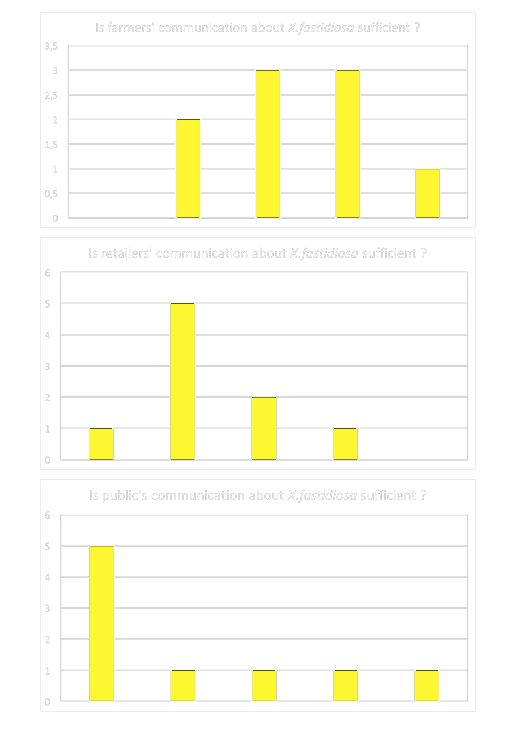Surveys
The best thing about a survey is that it helps to get the opinion of people. And to get the most relevant information, it is the ones that are directly touched that should be asked: the farmers and the public. As it concerns their field of activity, the farmers should be the most informed about Xylella fastidiosa. And since they are the principal users, their decision about using or not our product is essential to us. What we did was simple. We created a short survey to get to know if the different actors accepted our cure, even if it was a GMO.

Farmer's survey
We went to see the farmers, directly at the "Salon des agricultures de Provence" or indirectly by emailing them. We got answers from 9 enterprises, 6 of them producing organic and AOP food.
We learned that the X. fastidiosa’s problem is well known within the agricultural field. Moreover, they all agree that it was a subject of concern and they do think it is one of their priorities. They also think that the communication within their field of activity is correct even if progress could be made with the communication within the retailers and with the population.
As for the final form of the cure, they prefer pulverization or vaporization, but not injection. So when we did the environemental tests, we tried all the technics they asked, to find the best one. Another need was the ability to sell their product shortly after the cure is done: most of the answered varied between 0 et 90 days. When we asked them what was the characteristic they would value the most in our product, the answered were efficacity and conformity with labels. Thanks to this answer, we begin to think about all the intricacies of the law. Finally, our biggest point was about the GMO subject. Only 4 said they would use a modified virus as a cure against X. fastidiosa. For 8 on 9, they would prefer a purified organic compound. We changed our approach according to their answers: we stopped working with a lytic phage and instead went for a non-replicative phage one : the phage-like particles.
Public survey
We wanted to know if the population was ready to accept our cure - a genetically modified virus - so we made a survey to get their opinion. To ensure the broadest possible audience, we made the survey both in English and in French. The survey was done via google.form, we send the link to all networks, asking them to send it further into their networks. As we are mainly students, it has to be taken into account that the proportion of answer from students may cause a bias in the general answers.
As you can see from the chart, more than ⅘ of the people who answered our survey are aged between 18-25. More than ⅔ hadn’t ever heard about X. fastidiosa ! For those who knew, it was for more than half thanks to the media or from word of mouth. They felt in ¾ of the answered concerned, interested and involved by this bacteria.
We wanted to test their knowledge about synthetic biology: the science of tackling nature. ⅔ did know about it, that is probably because of the great proportion of biology student in the survey. They thought this science was great, 90% of the studied population had a good opinion. More specifically, the feeling they felt about the synthetic biology was, from most common to least: interested, enthusiastic, confident and concern being about as much present.
They all had a good opinion of our project. Once again we wanted specificity. We asked them and got basically the same result as for synthetic biology: interested, enthusiastic, confident and concern being about as much present. They also said that the most important characteristics of our project are: first of all the protection of the tree and the destruction of X. fastidiosa, on the second-hand ecology principles and the specificity aspect of the cure...
When we asked them about the GMO matter, we already changed our project for the PLP approach. Since we could be tagged as a GMO, we wanted to ask them about their opinion after a clear explanation of our work. They weren't all hermetic about the GMO subject, as we had expected: their opinion is not well defined, more than half of them answered: "it depends". Most of them were quite aware of the definition of a GMO, so this word doesn't scare them. If we could manage good communication, our project might be accepted by the society.
Intern survey
As we said previously, a survey is the best way to take everyone's opinion. As we were more than 40 in the begin of this adventure, the need to take everybody opinion was the first major challenge. Thanks to the human practice's approach, we did, in the very beginning of our project, to ask our team their desires. The objectives were multiples, integrate into the team the more timid ones, build a real team spirit by spreading our values, and help to define ourselves for the financial files. This was truly essential in the building of a true and strong team. *PHOTO FUN SI POSSIBLE ?* In addition, it helped us to practice on our surveys creation.





